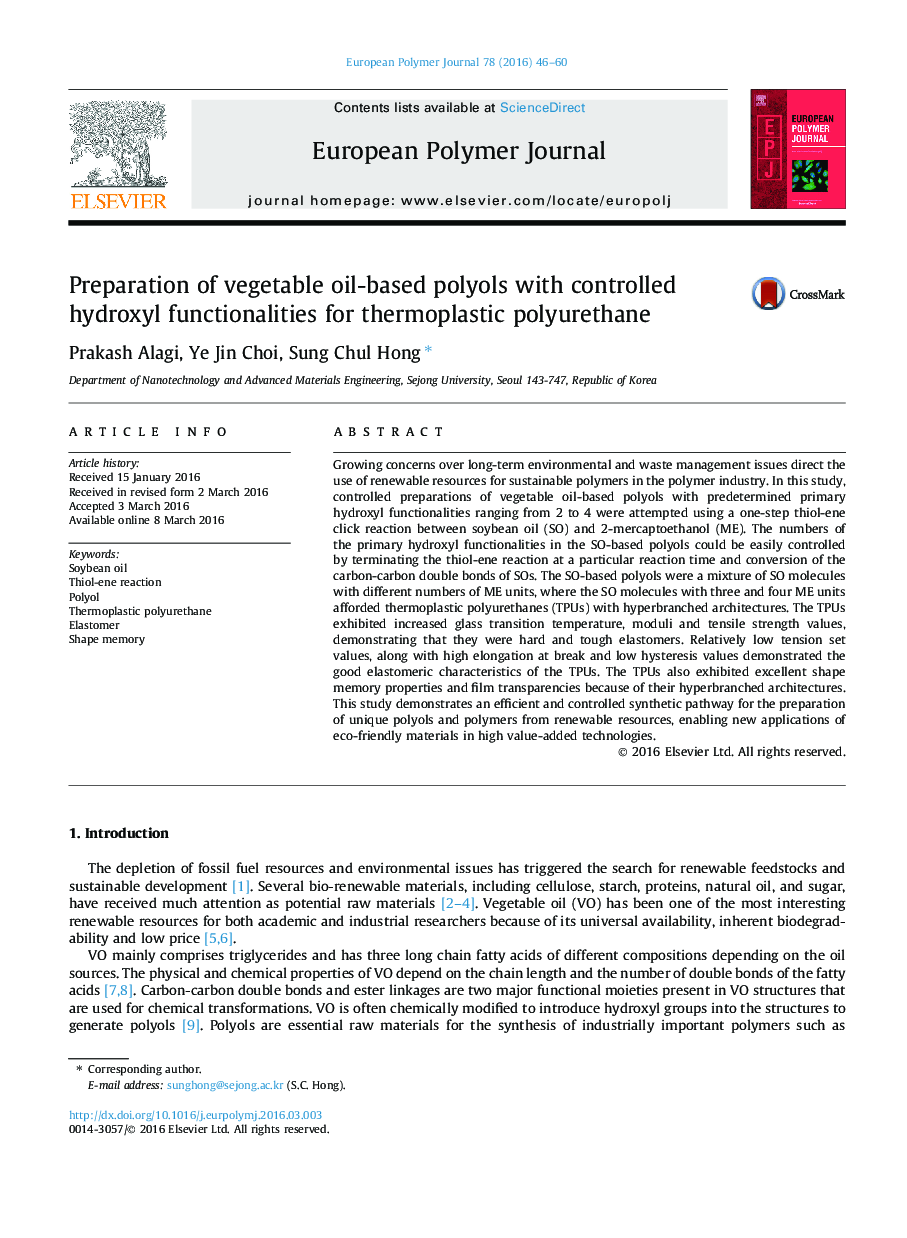| Article ID | Journal | Published Year | Pages | File Type |
|---|---|---|---|---|
| 1394650 | European Polymer Journal | 2016 | 15 Pages |
•Controlled preparation of soybean oil (SO)-based polyols is demonstrated.•Thiol-ene reaction is employed for the control over the hydroxyl functionalities.•Average number of primary hydroxyl functionalities per molecule ranges from 2 to 4.•The polyols afford thermoplastic polyurethanes with hyperbranched architectures.•The TPUs are elastomers with good shape memory properties and film transparencies.
Growing concerns over long-term environmental and waste management issues direct the use of renewable resources for sustainable polymers in the polymer industry. In this study, controlled preparations of vegetable oil-based polyols with predetermined primary hydroxyl functionalities ranging from 2 to 4 were attempted using a one-step thiol-ene click reaction between soybean oil (SO) and 2-mercaptoethanol (ME). The numbers of the primary hydroxyl functionalities in the SO-based polyols could be easily controlled by terminating the thiol-ene reaction at a particular reaction time and conversion of the carbon-carbon double bonds of SOs. The SO-based polyols were a mixture of SO molecules with different numbers of ME units, where the SO molecules with three and four ME units afforded thermoplastic polyurethanes (TPUs) with hyperbranched architectures. The TPUs exhibited increased glass transition temperature, moduli and tensile strength values, demonstrating that they were hard and tough elastomers. Relatively low tension set values, along with high elongation at break and low hysteresis values demonstrated the good elastomeric characteristics of the TPUs. The TPUs also exhibited excellent shape memory properties and film transparencies because of their hyperbranched architectures. This study demonstrates an efficient and controlled synthetic pathway for the preparation of unique polyols and polymers from renewable resources, enabling new applications of eco-friendly materials in high value-added technologies.
Graphical abstractFigure optionsDownload full-size imageDownload as PowerPoint slide
